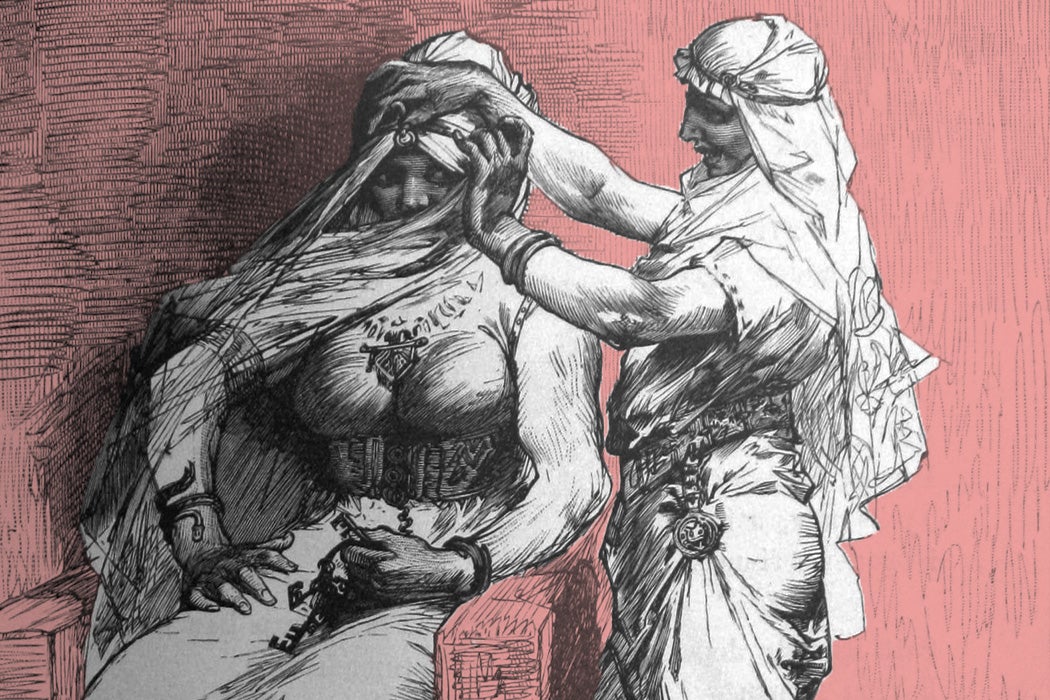There was once a crisis in Asgard. Thor’s mighty hammer Mjölnir went missing. This, according to H. R. Ellis Davidson, was a disaster for Odin’s court. Mjölnir was Thor’s “strong right arm and his simple weapon,” wielded in Odin’s service to “overcome any giant or troll as long as physical might alone and not cunning magic was not in question.”
The thieving culprit? Thrymr, king of Jötunheima, who demanded Freyja, the goddess of love and fertility and the most eligible bachelorette in Asgard, in exchange for the weapon’s safe return. Thor would have his hammer back when he, the determined and desperate King Thrymr, had his bride and his wedding. Freyja refused to be blackmailed into matrimony with a man she found repulsive. In fact, she was so infuriated by the proposal that her necklace, the cherished Brisingamen, shattered and scattered across the floor, a sure sign that the vain and temperamental goddess wasn’t happy. And so the gods conferenced.
Odin’s right-hand man Loki, the notorious trickster, came up with a clever solution. Thrymr would get a bride, along with a lovely bridesmaid to serve as an official witness to the ceremony—just not who he was expecting.
Literature and language scholar James Frankki describes the plan:
Not surprisingly, Loki—whose claim to fame rests on his gender-bending antics—offers to accompany Thor as his “bridesmaid.” Thor’s attire includes not only a wedding dress, but many of the accoutrements of thirteenth-century bridal fashion: a woman’s head dress, a veil, expensive jewelry, brooches, and even a new bride’s household keys.
Loki was less elaborately adorned, so as to not steal Thor’s thunder, but he passed as the bridesmaid when they arrived in Jǫtunheimar for the wedding. Thor, on the other hand, did not.
Ever the famous smooth talker, Loki was flush with excuses for Thor’s unconventional appearance and his behavior. When guests noticed that the bride chomped her way, in a very unladylike fashion, through most of the wedding feast, Loki explained that she was starving; she hadn’t eaten for days due to her premarital jitters! They said the bride’s eyes were red-rimmed and raging when her bridegroom lifted the veil for a kiss? Oh, she was sleep-deprived, Loki explained, from fretting about her impending wedding night! Thrymr, hopelessly in love and blinded by the apparent success of his scheme, believed it all, and one can imagine his surprise in the moment Thor threw off his disguise, reclaimed his hammer, and proceeded to slaughter him and all of the wedding guests.
Of course Disney never picked up this story as a humorous episode in Marvel’s widely popular Thor-and-Loki storyline. Nor did they latch onto that one eyebrow-raising myth in which Loki shapeshifted and mated with a horse. But much of Norse mythology in general isn’t marketable as family-friendly entertainment.
Tips for Teaching:
Recontextualize Loki: Stefanie von Schnurbein analyzes the function of Loki in the Prose (or Snorra) Edda in the journal History of Religions.
Consider the contemporary: Read Dru Jeffries’s analysis of MCU world-building.
Support JSTOR Daily! Join our membership program on Patreon today.







